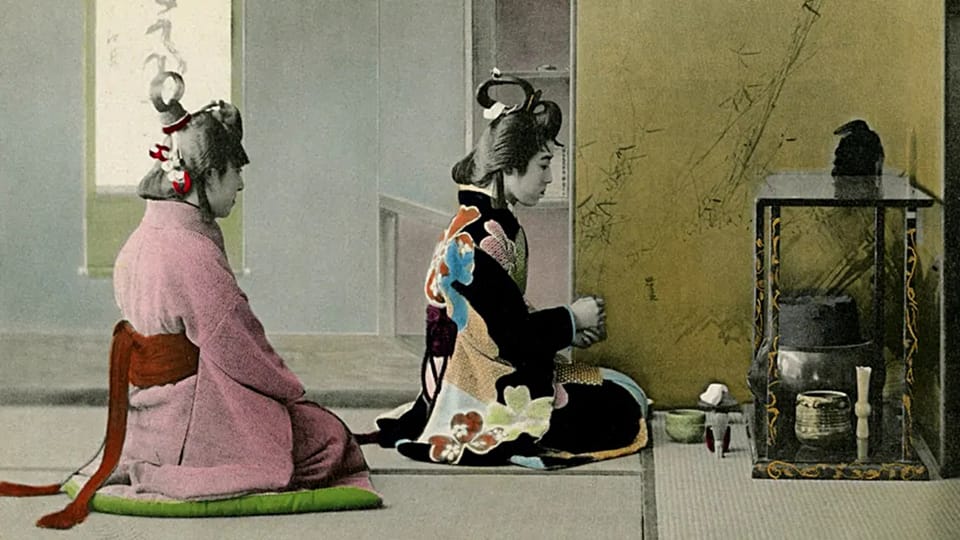Steeped in Style: Japanese Tea Ceremonies

Let’s take a little trip to Japan, back to the old days, like way back. It’s the 8th century and these guys are sipping on something more than just your average brew—it’s green tea, baby, and it’s medicinal, straight outta China. But, hold up, it doesn’t really hit the big time until the Muromachi period rolls around—that’s 1333 to 1573 for those of you not up on your Japanese history. Now, it’s not just the monks and the high rollers getting in on the action, everyone’s getting a taste, and it’s a full-blown social scene.
Enter Sen no Rikyū, the man, the myth, the legend of the tea ceremony. This dude is the master of tea—flips the script and makes it all about rustic simplicity, Zen vibes, and serious mindfulness. We’re talking major influence here; this cat’s ideas set the stage for all the big schools of tea that are still schooling folks today like Omotesenke and Urasenke.
Now, a real-deal tea ceremony? Starts with a kaiseki feast, rolls into a thick tea session, and wraps with a hit of thin tea. But nowadays, who’s got time for that? Most of these gigs are more like short films, focusing on just the thin tea.
The setting? Picture a serene garden, a path winding to a tatami-mat tea room that’s all about keeping it low-key and introspective. Why? Because humility’s a big deal here. And inside, there’s this alcove, right? Got a scroll or some seasonal flowers—total wabi-sabi style. That’s beauty in the rough, beauty in the imperfection.
And the guests? You better step correct—modest dress, no flashy scents. It’s all about respecting the vibe. Every move is choreographed, from the way you handle the tea whisk and scoop to how you sip that green magic. Everything’s got its place and reason, like props and scenes in a movie.
It ain’t just about drinking tea. It’s a full sensory experience. You’re meant to soak in every detail, every choice the host makes, from the utensils to the decor. It’s about connection, being in the moment, totally immersive.
Let’s talk pottery—because you can’t have a tea ceremony without those iconic cups. We’ve got pieces that go way back, from ancient China and Korea, and then these homegrown Japanese styles like Raku, Shino, and Oribe. These aren’t just cups; they’re statements, each with its own story, steeped in a tradition where the rough edges and simple lines are more than just a style—they’re a philosophy.
So, what’s the big picture? The Japanese tea ceremony—it’s more than just hospitality. It’s art, it’s spiritual, it’s a whole community vibe. It’s about stepping out of the rush of life and stepping into a space that’s all about refinement and reflection. Pure, uncut cultural immersion.
